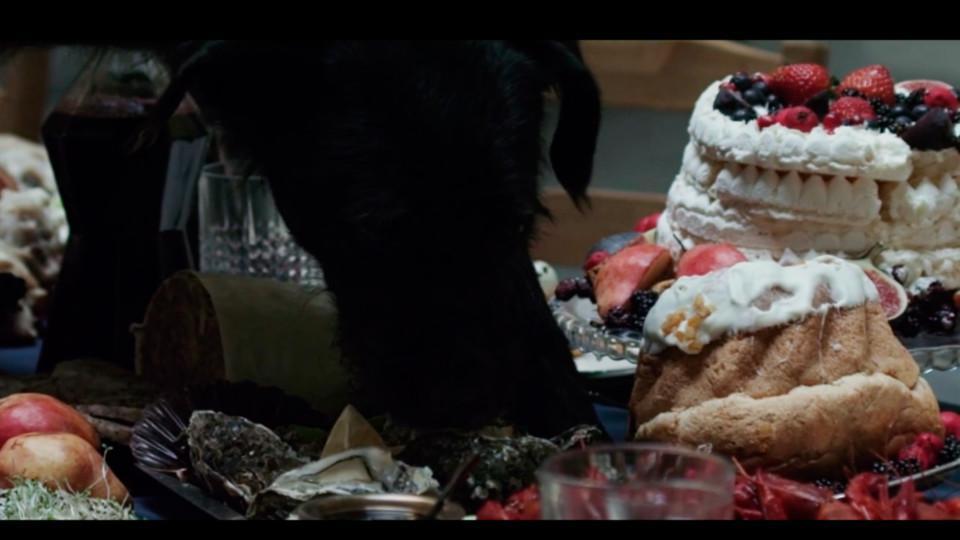Wojtek Doroszuk
Festin
Wojtek Doroszuk
Festin, 2013, video, 20 min 17 sec
Collection II of the Arsenal Gallery in Białystok. Work purchased by the Podlaskie Association for the Promotion of Fine Arts

This work by Wojtek Doroszuk is inspired by 17th-century Dutch and Flemish painting: the so-called banketje – still lifes with foodstuffs as their main motif, compositions of flowers and images of animals. The Festin, banquet, may be considered a free, filmic interpretation of the works by such masters of the genres as Willem van Aelst, Frans Snyders, Jan Dawidsz. de Heem, Jan Fyt or Ferdinand van Kessel. It is worth emphasising that, while arranging his own still life, Doroszuk was careful to render the setting faithfully, for instance selecting vessels that resembled tableware of the era.
Doroszuk comprehends the canvases by Dutch and Flemish masters as arrested scenes of an unfolding narrative. While a painter’s brush arrests movement, the camera keeps all the living organisms that happen to appear in the frame in motion: flies and beetles crawl on foodstuffs, a praying mantis devours its prey, the dogs happily munch meats and cakes. Thus, in Doroszuk’s work, the symbolic layer of old paintings acquires a real aspect, and their moral message, which originally hinted at future events, is unfolding in the present time. Deriving from the religious and ethical stipulations of 17th-century iconography, the contemplative aspect of those paintings (manifested in, for instance, the vanitas symbolism of flowers, fruit and insects) is absent from Doroszuk’s video. The destruction occurs in plain view, and the artist imbues the scenes of decay with neither an aesthetic value nor a metaphorical meaning.
Critics interpreting Festin point to the “post-Humanistic mental experiment of evoking a vision of the world from which Man is gone” as one of its sources. In Doroszuk’s approach, dystopian reality of the Earth after Man is free from the conventional norms that discipline social behaviour. Destruction of the meticulously composed still life, which is a product of anthropocentric culture, indicates that the principles governing the previous system are no longer applicable. This destruction occurs also on the semantic level: while the didactic explication of 17th-century paintings looked to unrestrained consumption as the reason for the impending fall, Festin shows unbridled instincts as the only principle that governs the new community taking over spaces vacated by Man; and it is a principle which is not subject to any of the old moral assessments.
Izabela Kopania
translated from Polish by Klaudyna Michałowicz

PLAN YOUR VISIT
Opening times:
Thuesday – Sunday
10:00-18:00
Last admission
to exhibition is at:
17.30